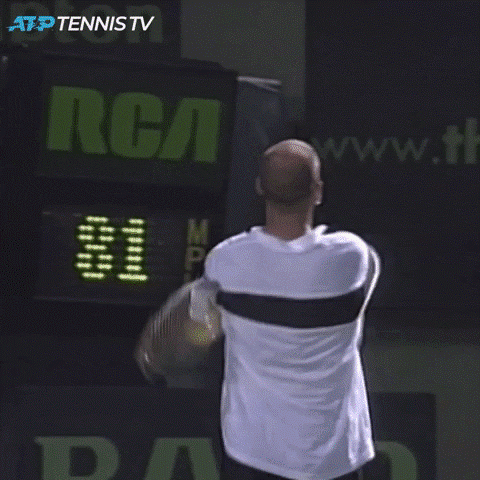How a Tennis Legend Can Improve Your Training
Training is BS—and by that, we mean Behavioural Science! In this series, we’re diving into the most effective strategies to elevate your workplace training
Tennis legend Andre Agassi is known for more than just his powerful serve. His journey of transformation is a masterclass in how behavioural science can change the game!
The Agassi Case Study: A Transformation Story
Andre Agassi’s career is the stuff of legends, but what’s often overlooked is how behavioural science played a pivotal role in his rise, fall, and ultimate resurgence. Early in his career, Agassi was a prodigy with undeniable talent, but he also struggled with motivation, consistency, and the pressures of the professional circuit. His career took a significant downturn, and many thought his best days were behind him.
Then came the turning point—a period of deep reflection and a commitment to change. Agassi worked closely with his coach, Brad Gilbert, who not only refined his tennis skills but also introduced a behavioural science approach to understand and modify Agassi’s mindset and habits.
What exactly did Agassi do, and how can it apply to your training programs? Let’s break down the key elements of his transformation through the perspective of behavioural science!
Understanding Triggers and Habits
Agassi’s team identified the triggers that led to negative behaviours on and off the court. For instance, they realised that certain situations—like high-pressure moments—caused Agassi to fall back into self-defeating patterns. By understanding these triggers, they could create strategies to interrupt these cycles.
Application to Training: In your workplace training, identifying the triggers that lead to unproductive behaviours in your employees is crucial. Whether it’s procrastination, resistance to new methods, or lack of engagement, understanding the root causes can help you tailor your training to address these issues directly.
Reframing Mindset
A significant part of Agassi’s transformation was shifting his mindset. Instead of seeing his career as a burden, he began to view it as an opportunity for personal growth and achievement. This shift was facilitated by behavioural techniques like positive reinforcement and cognitive restructuring.
Application to Training: Reframing the way employees view training can have a huge impact. Instead of seeing it as just another mandatory session, help them understand the personal and professional benefits they stand to gain. Use positive reinforcement to celebrate small wins and progress, which can boost motivation and engagement.
Incremental Change and Practice
Agassi didn’t overhaul his game overnight. His transformation was the result of small, consistent changes that accumulated over time. By focusing on incremental improvements—both in his technique and his mental approach—Agassi was able to rebuild his career.
Application to Training: Encourage a similar approach in your training programs. Rather than overwhelming employees with a massive amount of new information or skills at once, break it down into manageable chunks. Focus on incremental progress, with regular practice and reinforcement, to help new behaviours stick.
Building a Support System
Agassi’s transformation was also supported by a strong network of coaches, family, and friends who kept him accountable and provided encouragement when needed.
Application to Training: A supportive environment is key to the success of any training program. Create a culture where employees feel comfortable sharing their challenges and where peer support is encouraged. This helps enhance learning while also sustaining behavioural change.
For more insights, check out this conversation with Katy Milkman on “How to Change,” which dives deeper into the methods that helped Agassi transform his game.
Andre Agassi’s journey from struggling athlete to tennis legend is a powerful example of how behavioural science can drive meaningful change. Understanding triggers, reframing mindsets, focusing on incremental progress, and building a strong support system was key to Agassi being able to turn his career around—and these same principles can be applied to your organisational training.
Need more?
If you’d like to chat about how this can look for you, Get in touch.
About the author
Tricia Martin is an FYA Young Social Pioneer and an Australian Women Leading Tech Finalist. She also coached an Under 9’s netball team in her local community, which she thinks is just as impressive. She continually looks for ways to use technology, behavioural science and digital experiences to meet people’s needs and find people-centred solutions to messy problems. She spends her free time reading sci-fi books, scouring thrift stores and watching Buffy for the fifteenth time.



